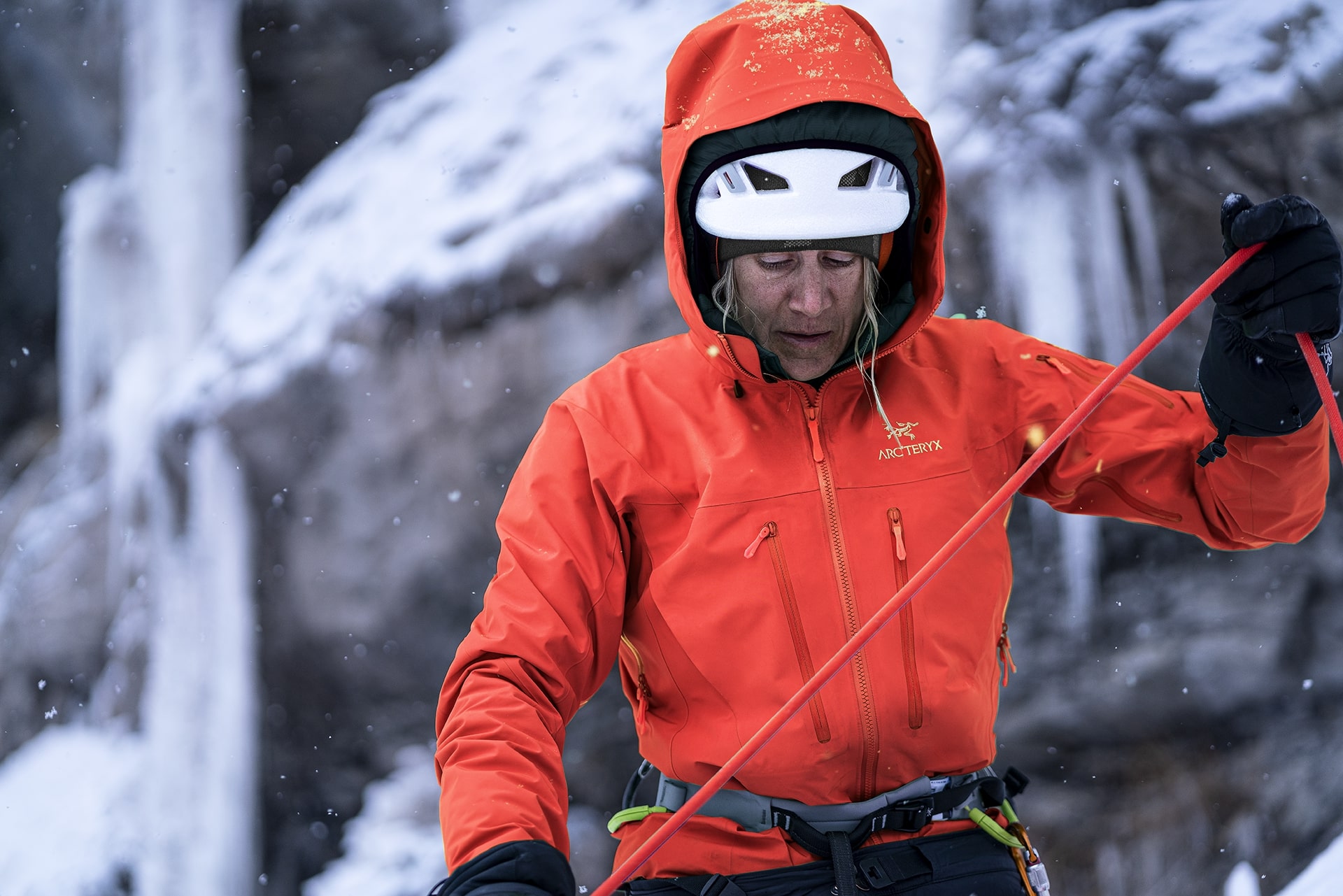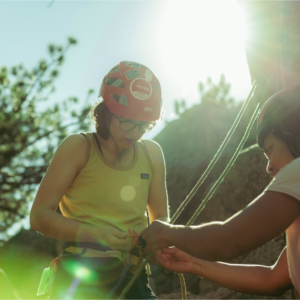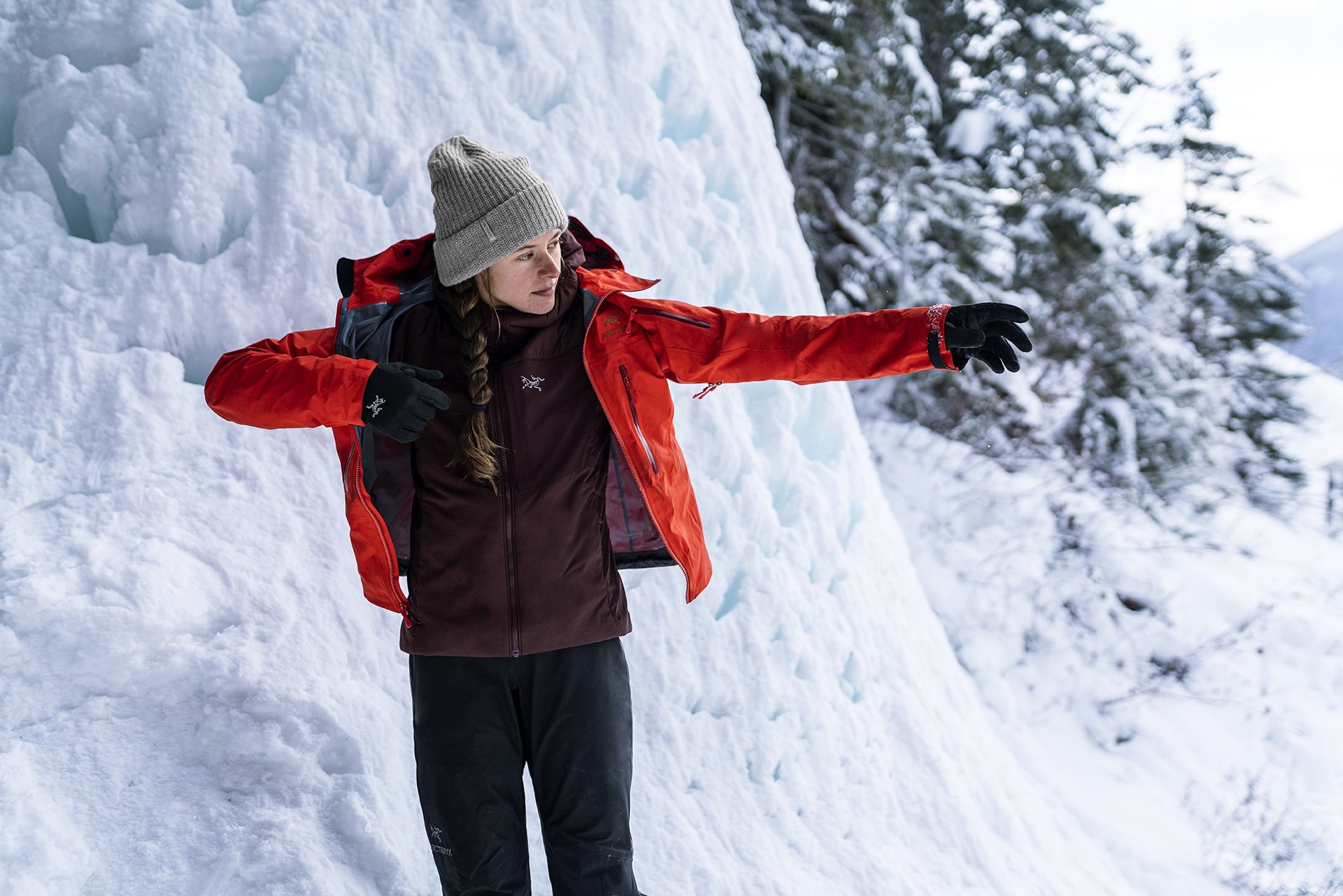FOUND

SAFETY AND DESIGN INTERSECT WITH RECCO® REFLECTOR TECHNOLOGY, NOW BUILT INTO ALL ARC'TERYX GORE-TEX PRO JACKETS.
Words—Will Gadd

A little over a year ago I wrote a simple, personal and passionate plea to the designers I work with at Arc’teryx: Please put more Recco into all our clothing, but especially the alpine gear and climbing jacket options. The reason was simple: I want my mountain friends to be found when they go missing, and for those searching for them to endure less risk. In the last 30 years I’ve lost a dozen friends to the mountains and lived on the edge of my seat for days waiting for news as the searchers worked. From Alex Lowe to Scotty Marion to Karen McNeil and Sue Nott to David Lama to Marc Andre Leclerc, too many of friends have gone into the mountains and disappeared. Others have been buried in huge debris fields while ice climbing, without transceivers. There had to be better solutions.

When my good friend Grant Statham and his team at Parks Canada Visitor Safety went to find David Lama, Jess Roskelly and Hans-Jorg Auer under the giant northeast face of Howse Peak they had little to work with. Multiple slides had raked the face, and there weren’t a lot of clues to help find the alpinists in the complex terrain. Avalanche beacons might have helped, but it’s a big face.
Families hoped and waited for news as the days went by. Eventually they found a few surface clues below the face, but the snow above was so unstable they had to search for hours while tethered into hovering helicopters in case a slide came down. They are consummate professionals and recovered the bodies of three fine young men.
 But the time spent searching was clearly very hazardous and stressful for everyone involved. There had to be better solutions. Bringing avalanche gear is one obvious solution.
But the time spent searching was clearly very hazardous and stressful for everyone involved. There had to be better solutions. Bringing avalanche gear is one obvious solution.
But winter alpine and waterfall ice climbers are probably the most weight conscious people on the planet. Toothbrushes aren’t just cut in half, they are left at home, and you would be mocked ruthlessly were one to appear in the night’s snow cave. When you have to carry everything on the frontpoints of your crampons up hard technical terrain the math is brutally simple:
If you can’t eat it or it doesn’t help you go up you don’t bring it, and that includes the avalanche gear skiers and sledders commonly bring. Traditional avalanche gear weighs over three pounds. That’s the entire food weight for a multi-day alpine climb, and two kilos pounds pulling on your shoulder straps on a long ice pitch is like hiking with an extra 10 kilos/20 pounds. Not going to happen.

Then there was the likelihood of being found alive. Many of us thought that we would likely be dead anyhow as a lot of winter climbs are in natural terrain traps where the snow accumulates in multi-story piles too deep to survive, even if the initial slide didn’t knock us off the face. But over the years two things happened: There started to be climbers dying in what were clearly otherwise survivable avalanches, and functional avalanche gear is now down to just over 500 grams.
This spring I was peripherally involved in an ice climbing avalanche accident where the gear came very close to saving the victim’s life and allowed her family to say goodbye in the hospital. I cannot imagine looking at that debris pile and not having a way to search it. In honour of the beautiful woman who died and the other friends we’ve all lost, I and other pro athletes across brands are pushing hard for the use of the new lighter avalanche gear, and it’s working.
But that still doesn’t find my lost friends, or those who focus on lightweight above all else. Beacons also sometimes fail. In Alaska two years ago search teams confirmed the location of climbers Marc Andre and Ryan when they got a Recco response in a crevasse in a sea of white. Recovery wasn’t safe, but just knowing where your deceased friends or family member are means more than maybe can be understood unless you’ve stood there waiting for news. It means everything for closure and peace. Recco is basically a tiny (under four grams) directional radar reflector you can sew into clothing or mold into boots, and it’s been in use for years in ski gear as a last-ditch safety effort.
The Recco detectors aren’t commonly carried in the field as they are heavy, meaning response time is slow, but it has saved some lives and cut search times dramatically. There is no downside due to weight or bulk in having the reflectors, but they do cost a little. Unfortunately, until now they haven’t had significant uptake in the climbing world. Marc and Ryan just happened to have a reflector in one of their ski-oriented jackets, and the SAR team had a Recco detector. It made a difference.
This is where a new system from Recco comes in. I had the opportunity to see it in person in Canmore, and it was genuinely amazing. It’s a much more powerful detector unit that hangs below a helicopter and can “ping” Recco strips while flying at speed safely above the terrain. A square kilometer piece of terrain can be searched in minutes. An entire alpine face, or the terrain below it, could be searched with minimal risk to the SAR team. The designers at Arc’teryx are passionate outdoor people. They’ve lost friends too. I am thankful they are leading not only with designs I use 200+ days a year to get outside, but also to help bring me and others back.
 Thank you to the designers for listening and enacting fast change, to you for reading this, SAR groups globally, and to all the people and companies working to make positive changes. Thank you, it’s important work.
Thank you to the designers for listening and enacting fast change, to you for reading this, SAR groups globally, and to all the people and companies working to make positive changes. Thank you, it’s important work.











